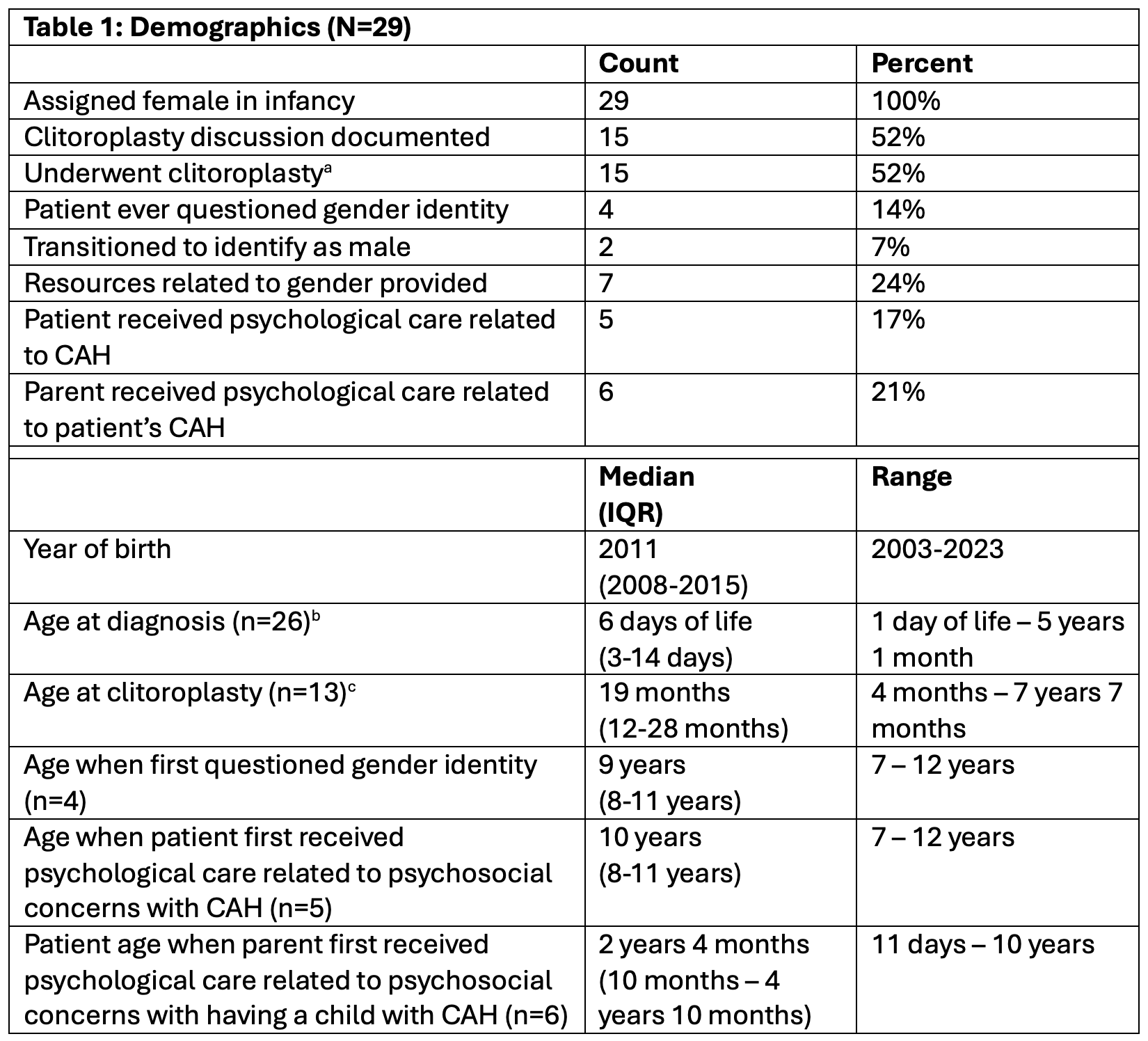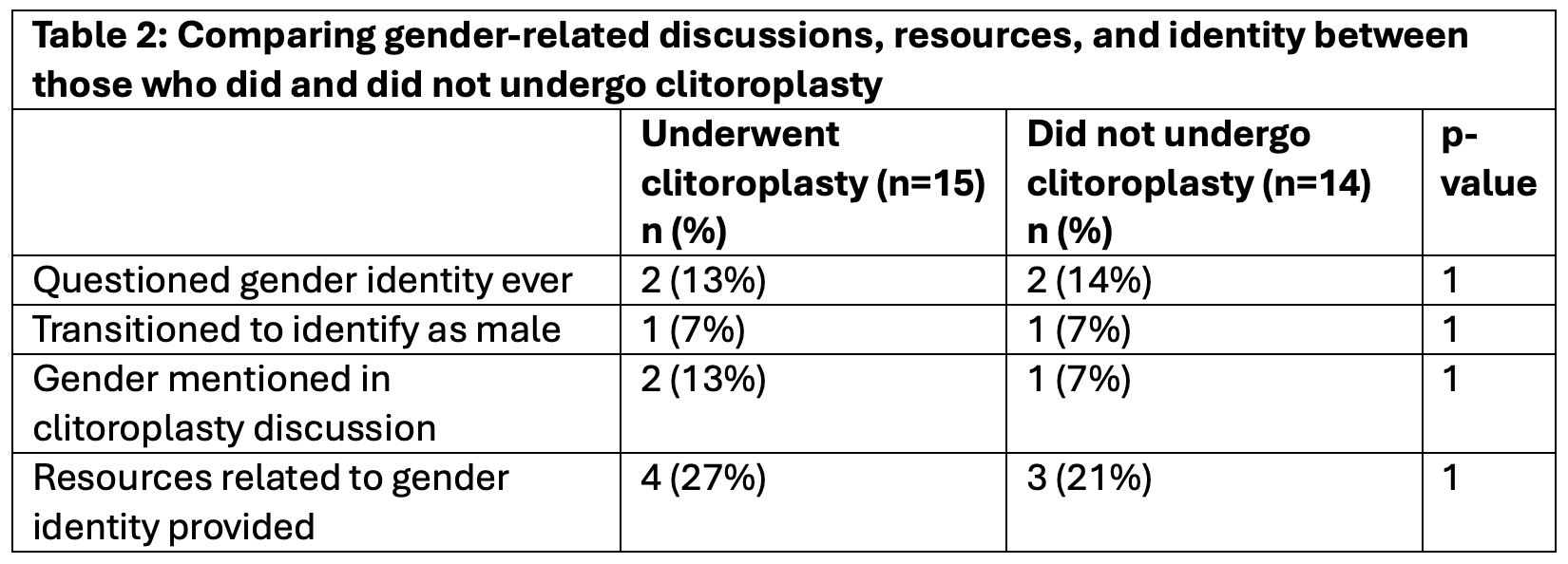Endocrinology 2
Session: Endocrinology 2
313 - Navigating Surgery, Gender Identity, and Life with a Chronic Condition: Experiences of Pediatric Patients with Clitoromegaly due to Congenital Adrenal Hyperplasia
Sunday, April 27, 2025
8:30am - 10:45am HST
Publication Number: 313.5737
Tess Jewell, University of Wisconsin School of Medicine and Public Health, Madison, WI, United States; Kelsey Lewis, University at Buffalo, Buffalo, NY, United States; Tessa Meurer, University of Wisconsin School of Medicine and Public Health, Milwaukee, WI, United States; Angelica Scribner, University of Wisconsin School of Medicine and Public Health, Madison, WI, United States; Madrigal von Muchow, University of Wisconsin School of Medicine and Public Health, Madison, WI, United States; Jennifer Rehm, University of Wisconsin School of Medicine and Public Health, Madison, WI, United States

Tess I. Jewell, n/a (she/her/hers)
MD-MPH student
University of Wisconsin School of Medicine and Public Health
Madison, Wisconsin, United States
Presenting Author(s)
Background: Congenital adrenal hyperplasia (CAH) is a chronic condition caused by impaired production of adrenal hormones. Patients often produce excess androgens, which can lead to clitoromegaly in patients with 46,XX karyotype. Parents of young patients with clitoromegaly may be offered clitoroplasty, an elective surgical intervention to reduce the size of their child’s clitoris. Research suggests that patients with CAH may experience higher rates of gender incongruence compared to the general population. The benefits and risks of clitoroplasty and discussions about gender identity in relation to this procedure lack consensus.
Objective: We explored the experiences of pediatric patients with CAH and clitoromegaly, including clitoroplasty frequency, gender exploration, resources, and support.
Design/Methods: We conducted a retrospective chart review of pediatric patients with CAH and clitoromegaly seen at a large academic medical center between 2000-2023. A team with expertise in this area, including people with lived experience, developed the data abstraction plan. Chart documentation related to the patient’s gender, surgery, resources, and support provided were gathered verbatim. Key themes and areas of interest were analyzed. Data analysis utilized descriptive statistics with Fisher’s exact test.
Results: We identified 29 patients with CAH and clitoromegaly (Table 1). All were assigned female in infancy. Fifteen (52%) underwent clitoroplasty (median age 19 months). One family requested clitoroplasty for their child at a young age due to concern for her gender identity in the setting of anatomic variations. Four (14%) patients questioned their gender identity and two transitioned to identify as male, with no significant differences between those who underwent clitoroplasty and those who did not (Table 2, both p=1). Gender identity was rarely discussed in documentation related to clitoroplasty (20%). A minority of patients (17%) and parents (21%) received psychological care related to CAH, and resources related to gender were provided to 24% of patients and their families (Table 1).
Conclusion(s): Findings from this small cohort highlight the need for comprehensive care for this patient population with appropriate resources (including related to gender identity), especially when considering irreversible elective genital surgery. The rate of gender incongruence was similar to those previously reported in 46,XX CAH patients assigned female at birth and was higher than in the general population. Our findings failed to show a significant difference between rates of gender incongruence by history of clitoroplasty.
Table 1: Demographics
 a: includes n=4 patients who underwent clitoroplasty for whom we do not have documentation of discussions about this surgery (due to consultations occurring outside of the medical center)
a: includes n=4 patients who underwent clitoroplasty for whom we do not have documentation of discussions about this surgery (due to consultations occurring outside of the medical center)b: excludes n=3 for whom we do not have this data
c: excludes n=2 for whom we do not have this data
Table 2: Comparing gender-related discussions, resources, and identity between those who did and did not undergo clitoroplasty
 Fisher's Exact Test was used to assess for significant differences between those who underwent clitoroplasty and those who did not.
Fisher's Exact Test was used to assess for significant differences between those who underwent clitoroplasty and those who did not.
